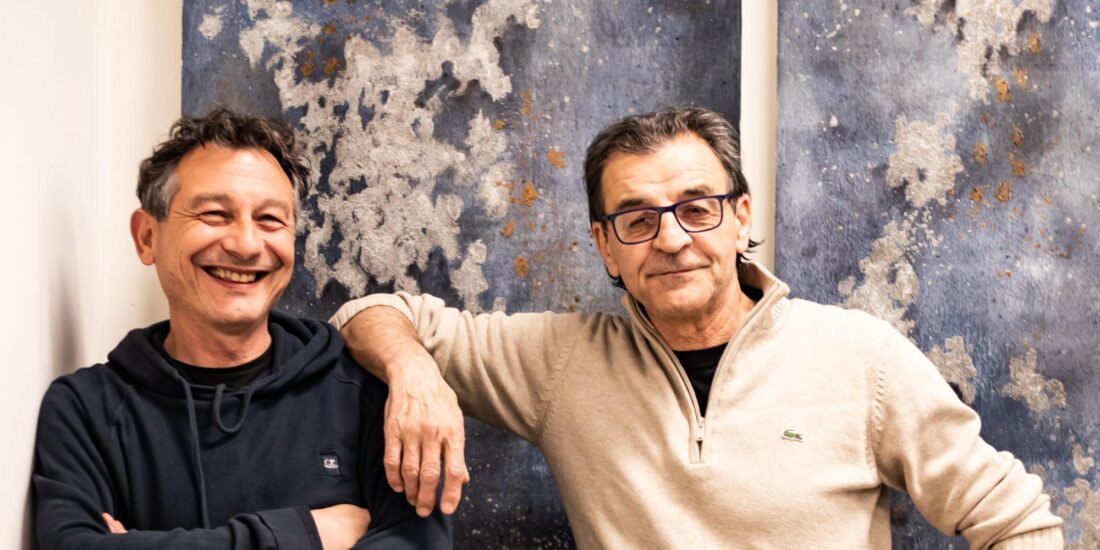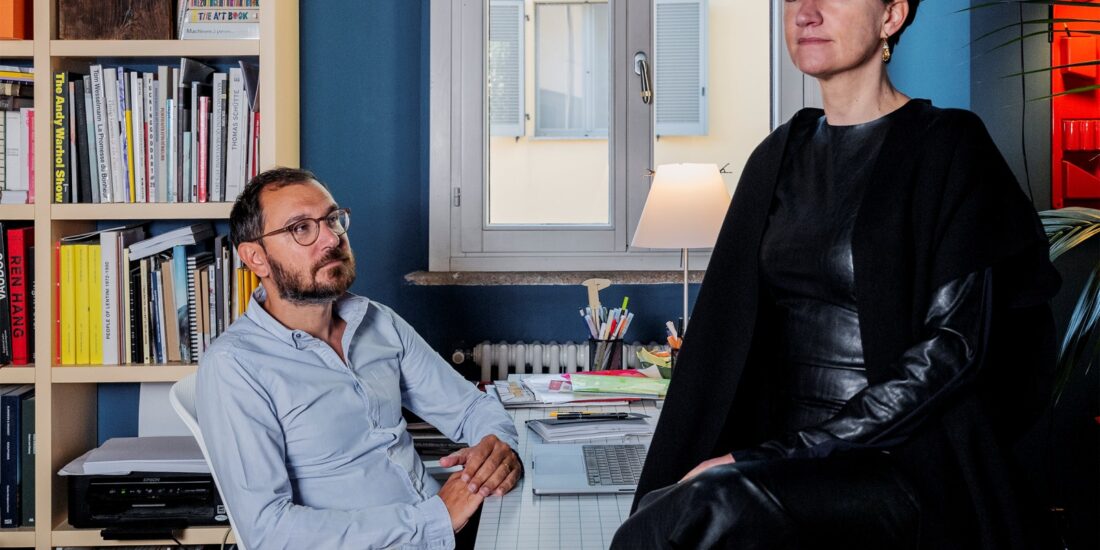Timemade by David Dolcini Finds Home in a Basilica
When a 16th-century Basilica of Sant’Agostino, now reborn as the design gallery Volumnia in Piacenza, becomes the setting for a site-specific project called Timemade by designer David Dolcini, the result is nothing short of a sublime composition of craftsmanship within walls of history. By Sindhu Nair
 Timemade is poetry carved in wood—an intimate, meditative journey where Milanese designer David Dolcini surrenders to the pure joy of making with his hands, unbound by deadlines or demands. Started in 2020 as a free research composition by David, the project has evolved alongside the designer, mirroring his personal and professional growth.
Timemade is poetry carved in wood—an intimate, meditative journey where Milanese designer David Dolcini surrenders to the pure joy of making with his hands, unbound by deadlines or demands. Started in 2020 as a free research composition by David, the project has evolved alongside the designer, mirroring his personal and professional growth.
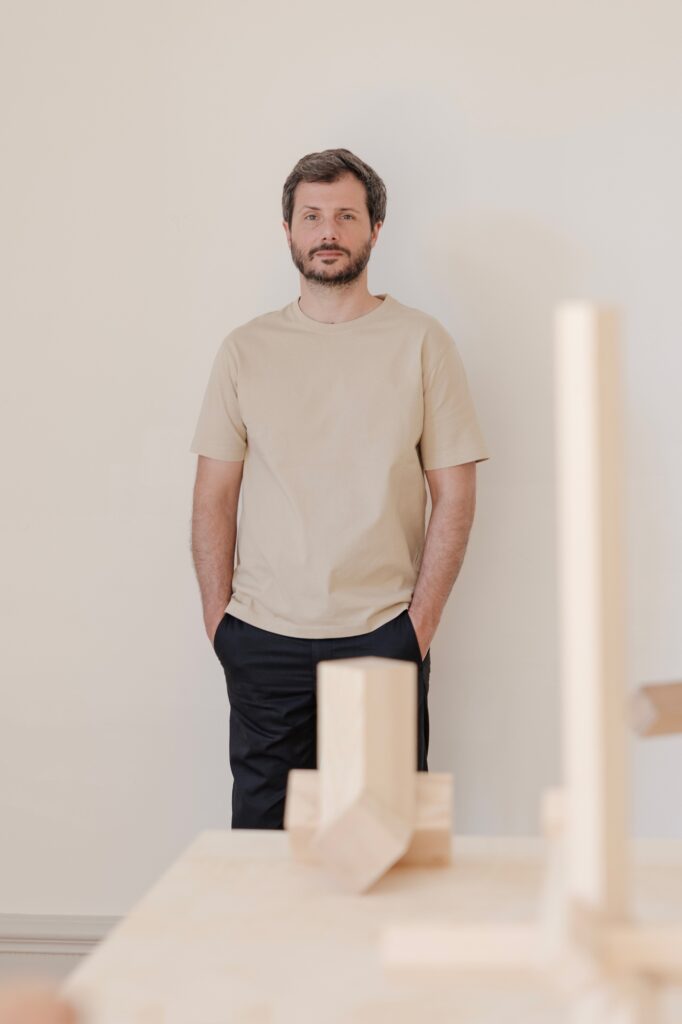
David Dolchini. Photo Credit: Lorenzo Barassi
It features unique pieces, primarily made of wood, reflecting the passage of time and shines light into David’s family heritage in woodwork.
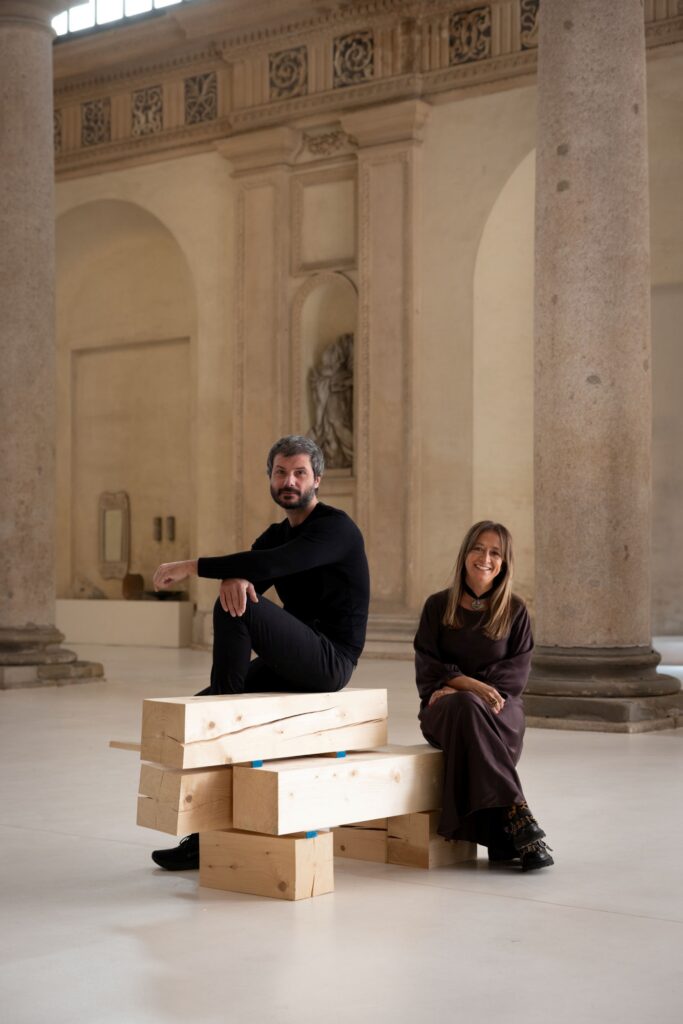
David with the Founder of Volumnia, Enrica De Micheli
When the Founder of Volumnia, Enrica De Micheli, presented this site-specific project as two acts, Timemade took a new dimension, one that straddles history and craftmanship, signifing the timelessness of wood and design. The first act, born as an installation, was placed on the church’s forecourt in December 2024. The second, an exhibition of one-of-a-kind sculptural objects within the monumental spaces of Volumnia, debuted on March 29, 2025, right in time for the Milan Design Week 2025.
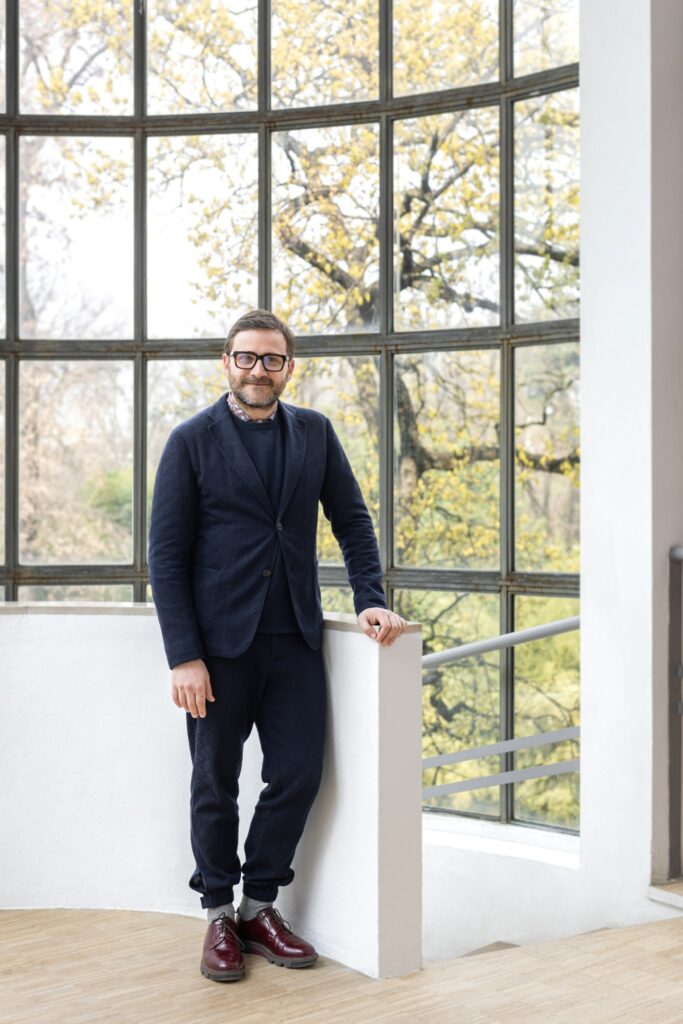
Marco Sammicheli (Director of Museo del Design Italiano of Triennale di Milano); Image Credti: Gianluca Di Ioia_© Triennale Milano
The designer, with the collaboration of the project’s curator Marco Sammicheli (Director of Museo del Design Italiano of Triennale di Milano), shines light onto the evolution of his research into forms and archetypes. “Timemade is a laboratory of personal and introspective research on design, on my profession and on time as a dimension. In the exhibition ‘David Dolcini. Le forme del Tempo’ these values are maintained but the signs that form the alphabet of Timemade in the exhibition are composed and exposed in an organic way in a story in harmony with the space. The title Le forme del Tempo suggests a relationship between time and form.”
 Timemade is incomparable to all the designs we see around in Milan because each of the 37 objects on display is the result of years of research and free study, trial and error and is carved out of wood in celebration of the form, in a study of material, composition and ingenuity.
Timemade is incomparable to all the designs we see around in Milan because each of the 37 objects on display is the result of years of research and free study, trial and error and is carved out of wood in celebration of the form, in a study of material, composition and ingenuity.
 “Each of these objects was made in a single piece (with its errors and inaccuracies) using only hand tools. Furthermore, all the objects are part of a single thought; each object is a small evolution of the thought of the object that preceded it and so will be the starting point for the object that will follow it (for this reason their names are alphanumeric acronyms). This is true for both the objects and the series… the first were the Innesti,” says David.
“Each of these objects was made in a single piece (with its errors and inaccuracies) using only hand tools. Furthermore, all the objects are part of a single thought; each object is a small evolution of the thought of the object that preceded it and so will be the starting point for the object that will follow it (for this reason their names are alphanumeric acronyms). This is true for both the objects and the series… the first were the Innesti,” says David.
A Space for Meditation and Dialogue
 Within the imposing grandeur of Volumnia, the project’s curator, Marco Sammicheli, has shaped both space and craft with equal reverence, allowing each to speak its own story in quiet dialogue with the other.
Within the imposing grandeur of Volumnia, the project’s curator, Marco Sammicheli, has shaped both space and craft with equal reverence, allowing each to speak its own story in quiet dialogue with the other.
“David’s work for the Timemade project deals with an idea of time understood as a variable. The same one that shapes habits, materials, and language. Compared to his work as an industrial designer, this project is made up of objects with a poetic traction, almost as if they were a testimony to the origin of design. The Volumnia space is historic; it is a former place of worship built to welcome, host, and meditate. The exhibition project adapts to this environment without complexes.”
 For Marco, curating this project was a natural extension of his ongoing collaboration with David. “My role is always the same in every project. I accompany the work of a designer that I follow and respect. I write and formulate. Together with the designer, we build an architecture of thought. I create the conditions for forms and ideas to interact in a physical and practicable experience.”
For Marco, curating this project was a natural extension of his ongoing collaboration with David. “My role is always the same in every project. I accompany the work of a designer that I follow and respect. I write and formulate. Together with the designer, we build an architecture of thought. I create the conditions for forms and ideas to interact in a physical and practicable experience.”
 “With David, this time too, after Milan and Copenhagen, his research becomes food for thought and an element of connection between limited series and design. I don’t think that Timemade, represented in the exhibition Le forme del tempo, can be ascribed to an idea of sculpture, but it certainly looks to the codes of sculpture as an expressive tool.”
“With David, this time too, after Milan and Copenhagen, his research becomes food for thought and an element of connection between limited series and design. I don’t think that Timemade, represented in the exhibition Le forme del tempo, can be ascribed to an idea of sculpture, but it certainly looks to the codes of sculpture as an expressive tool.”
Material as Memory
 David’s choice of material—wood—is central to the exhibition’s narrative. “David is a virtuoso of wood. He has transformed this legacy into a profession through family tradition and personal passion,” Marco reflects. “He knows the history of art and the value of rural culture. What many call narration, in David, it is a correspondence with an attitude of life. In the manual and mechanical manipulation of wood there is all the timeless symbolism of the human being in his original environment.”
David’s choice of material—wood—is central to the exhibition’s narrative. “David is a virtuoso of wood. He has transformed this legacy into a profession through family tradition and personal passion,” Marco reflects. “He knows the history of art and the value of rural culture. What many call narration, in David, it is a correspondence with an attitude of life. In the manual and mechanical manipulation of wood there is all the timeless symbolism of the human being in his original environment.”
 The collaboration between designer and curator has also been a deeply enriching one. “Frequenting David’s world allows you to calculate the distance that has been created between the urban and digital reality and the analogical and sensitive one typical of artisan workshops and the Italian countryside,” says Marco. “The lively dialectic between us, our respective stubbornness has created a very fruitful dialogue. This new exhibition together, then a book, within the collaboration with Volumnia have nourished an already fruitful human and professional relationship.”
The collaboration between designer and curator has also been a deeply enriching one. “Frequenting David’s world allows you to calculate the distance that has been created between the urban and digital reality and the analogical and sensitive one typical of artisan workshops and the Italian countryside,” says Marco. “The lively dialectic between us, our respective stubbornness has created a very fruitful dialogue. This new exhibition together, then a book, within the collaboration with Volumnia have nourished an already fruitful human and professional relationship.”
A Personal Encounter with Time
 David describes the experience of installing his work in Volumnia with awe and humility. “At first I was a little scared at the idea of having to design an exhibition of my objects inside such an imposing space, but then, thanks to the collaboration with the curator Marco, we identified common values between the space of Volumnia and my project, such as time, silence and the meditative aspect, and so I was able to design an installation in harmony with the values of the space.”
David describes the experience of installing his work in Volumnia with awe and humility. “At first I was a little scared at the idea of having to design an exhibition of my objects inside such an imposing space, but then, thanks to the collaboration with the curator Marco, we identified common values between the space of Volumnia and my project, such as time, silence and the meditative aspect, and so I was able to design an installation in harmony with the values of the space.”
 “Marco is a curator who is now internationally known and appreciated and this exhibition was for me a wonderful opportunity to work with a professional I respect (both as a curator and as a person) on a project that is completely new to me, such as the preparation of a personal exhibition. As Marco rightly says, I believe that my objects represent archetypes, an alphabet of formal material gestures rather than sculptures.”
“Marco is a curator who is now internationally known and appreciated and this exhibition was for me a wonderful opportunity to work with a professional I respect (both as a curator and as a person) on a project that is completely new to me, such as the preparation of a personal exhibition. As Marco rightly says, I believe that my objects represent archetypes, an alphabet of formal material gestures rather than sculptures.”
 David hopes visitors will experience the exhibition as a journey. “What the first act wanted to tell were the material and stylistic elements, a sort of manifesto of the objects that will then be exhibited inside Volumnia. While on the outside the out-of-scale object in fir confronted in a chromatic contrast with the neoclassical marble facade, inside what awaits the visitor will be a path that will bring him closer to the less formal values of the project such as silence, and slow and meditative time, exploiting the synergy between the project and the majestic spaces of the church of Sant’Agostino.”
David hopes visitors will experience the exhibition as a journey. “What the first act wanted to tell were the material and stylistic elements, a sort of manifesto of the objects that will then be exhibited inside Volumnia. While on the outside the out-of-scale object in fir confronted in a chromatic contrast with the neoclassical marble facade, inside what awaits the visitor will be a path that will bring him closer to the less formal values of the project such as silence, and slow and meditative time, exploiting the synergy between the project and the majestic spaces of the church of Sant’Agostino.”



